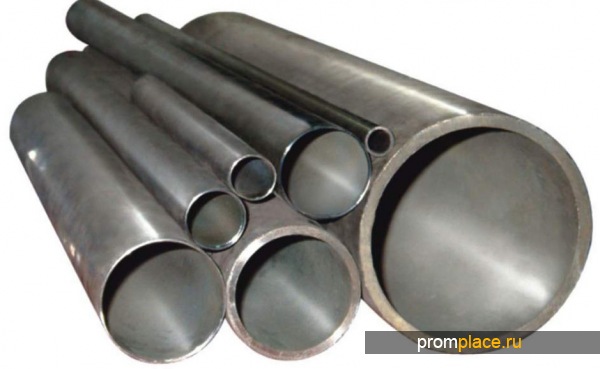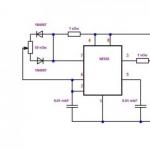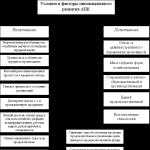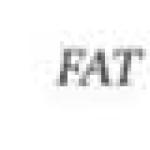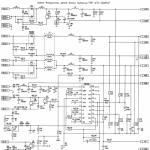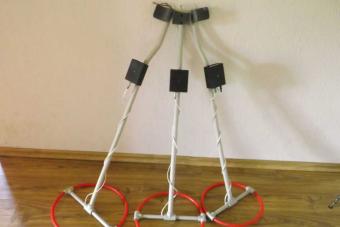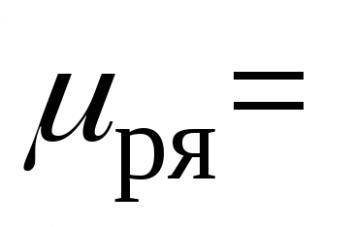It is unlikely that there are people who doubt that there is nothing stronger than metal, especially if it refers to a stainless group. But such an approval is very generalized because stainless steel can have different forms, wall thickness, etc. Stainless pipe 6x1, 10x0.5 can be overloaded with hands without much effort. In general, the stainless steel is endowed with a lot of advantages. Even the name indicates that such does not rust and cannot be destroyed, it is durable and aesthetic. The presence of a certain amount of chromium, nickel, other elements makes metal stable in conditions sea water, Acids, oil, chloride medium.
Grouping
Industry offers stainless steel, whose stamps belong to the following groups:
- austenitic (chromium 15-26%; 5-25% nickel, molybdenum 2-6%);
- ferritic (carbon 0.2%; chromium 12-27%);
- duplex (mixed ferrithic-austenitic structure with an inclusion of 18% - 28% chromium and 4.5% - 8% nickel);
- martensitic (chromium 10-13%; carbon 0.2-1.0%).
Ferritic (AISI 430; AISI 201) and AUSI 330, AISI 321, AISI316, AISI 316T) are considered the most popular. They do not take a magnet and have a wide range of applications. Stainless steel of the martensitic group has certain useful propertiesbut takes on a magnet. It is most often used in industry, eliminating the use in the sphere related to products, drinks.
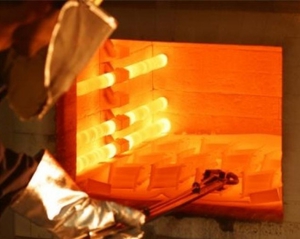
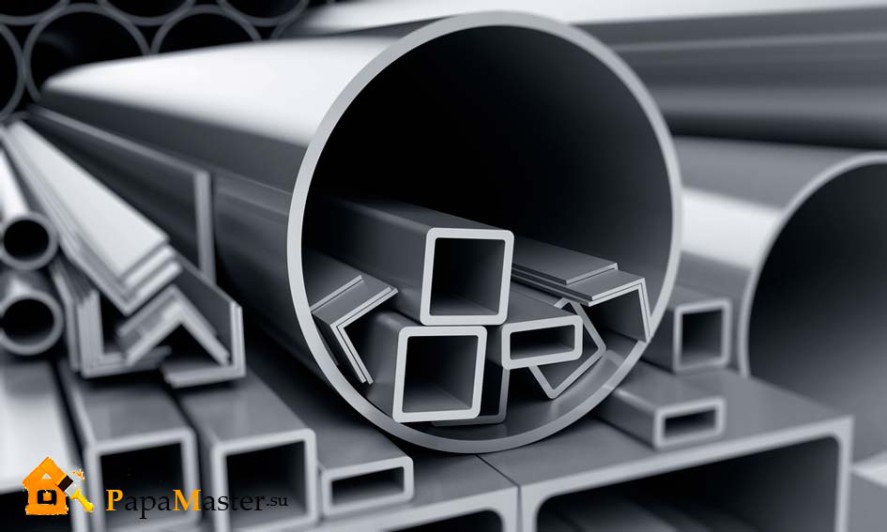
Stainless steel grades 12 x18n10t and 08x18n10t
In Russia, increasingly stainless steel brand is called the European names of AISI with three-digit numbers. But along with this name, the Soviet GOST is still used, where the percentage of carbon, chromium, nickel, etc. is indicated. Stainless steel 08x18H10T consists of chromo-nickel alloy with composition:
- carbon (C) -0.8%;
- chromium (x) - 18%;
- nickel (H) -10%;
- titanium (T) -1%.
The 12x18n10t stainless steel is identical to the steel 08x18n10t and consists of:
- carbon (C) -12%;
- chromas (x) 18%;
- nickel (H) -10%;
- titanium (T) -1%.
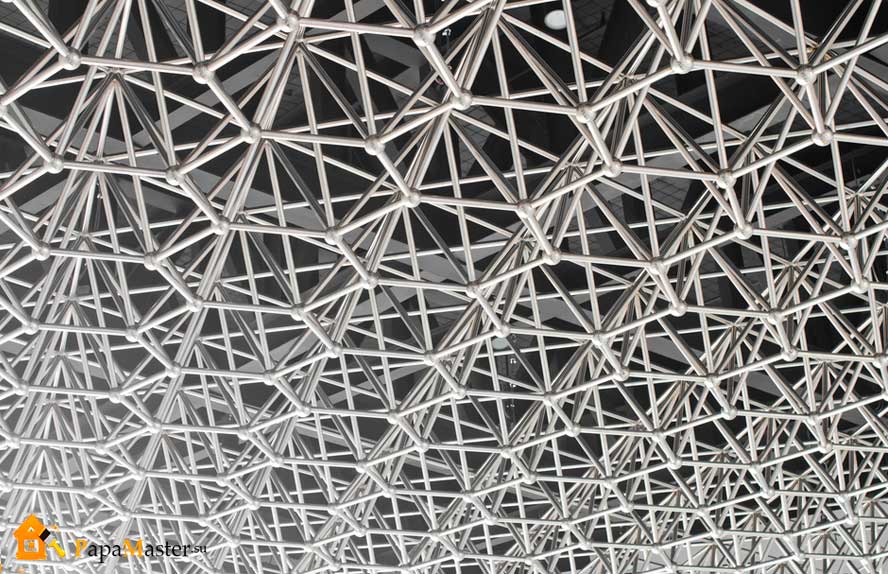
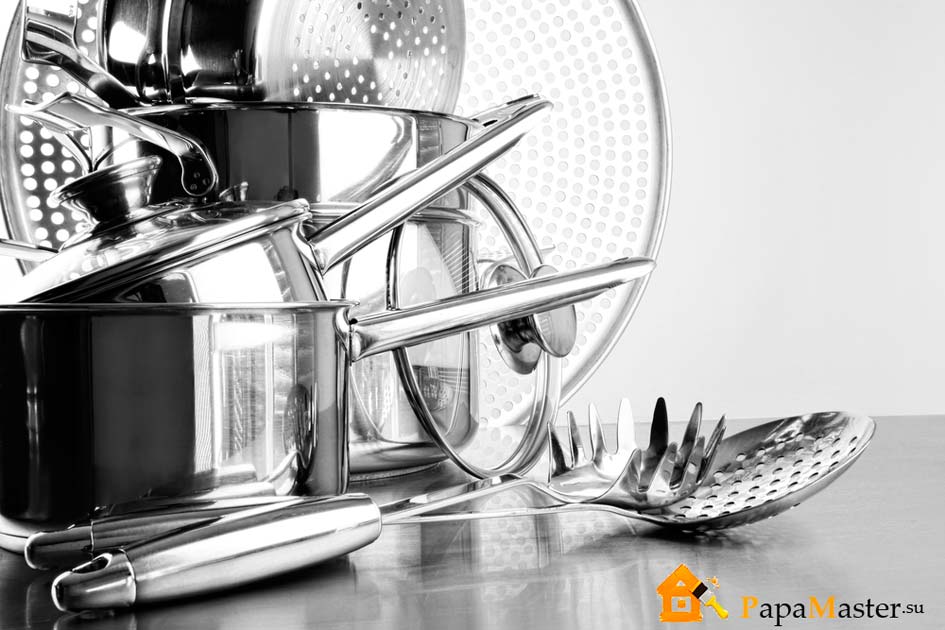
Brands 12 x18n10t; 08x18N10T - most popular, they correspond to the European name AISI 321, AISI 304. Such a stainless steel refers to austenitic group and has properties:
- stability;
- strength;
- durability;
- aesthetics.
Such a stainless steel is also called food and widely used in medicine, food and alcohol industries. Many parts of machine-tooling, mechanical engineering are also made of steel 12x18n10t; 08x18N10T, in view of design requirements. Do not refuse food stainless steel with oil production and recycling. Stainless steel of this class can be easily handled, welding, polished. Cut the stainless thing on special saws or plasma.
Heating Stainless Steel
Many consumers think that if their product consists of stainless steel, it is not afraid of anything. This is partly true, but not fully. Application on the heat meter, in the hot shops of the usual stainless steel will result in its destruction. In conditions of particularly elevated temperatures, a special heat-resistant stainless steel is used, which is endowed with resistance to temperatures above 1000 degrees. Such alloys should contain no less than 17% chromium and a certain amount of nickel, other components. Heat-resistant stainless steel brand 20x23n18 (AISI 310), 10x23H18 (AISI 310S), 20x20n14c2 (AISI 309), 20x25H18C2 (AISI 314), 95x18 et al. It is used in combustion chambers, suspension, clamps, fastening parts for boilers, baskets For thermal furnaces dr.
Range
The range of stainless steel produced is extremely wide. It can be equated to black rental except for beams, stripes, channels, pipes with a large diameter.
Popular stainless:
- thin sheets;
- circles;
- squares, hexagons, corners.
It is heat resistance to the ability of the material to resist deformation and destruction at elevated temperatures.
With long-term loading at high temperatures, the behavior of the material is determined by diffusion processes. For these conditions, the processes of creep and stress relaxation are characteristic.
Creeping is a slow increase in plastic deformation under the action of stresses smaller than the yield strength. Creeping leads to relaxation (gradual decrease) of stresses in pre-loaded parts.
The criteria of heat resistance are the limit of creep and the limit of long-term strength.
The creep limit is called voltage, under the action of which the material is deformed by a certain amount during a certain time at a given temperature. In the designation of the creep limit indicate the temperature, the amount of deformation and the time for which it occurs. For example, MPa means that under the action of a voltage of 100 MPa for 100,000 hours at a temperature of 550 ° C, a plastic deformation of 1% will appear in the material.
The limiting strength is the voltage, which causes the destruction of the material at a given temperature during a certain time. In the designation limit of long-term strength, the temperature and time of destruction indicate. For example, \u003d 130 MPa means that at a temperature of 600 ° C, the material will withstand the action of a voltage of 130 MPa for 10,000 hours. Limit of long-term strength is always less than the strength limit determined in short-term tests at the same temperature.
The main way to increase heat resistance is the creation of a coarse-grained structure with a homogeneous distribution of fine particles of hardening phases inside the grains and on their boundaries. In order to obtain an optimal structure in heat-resistant steels, complex doping is used, and chemical composition These materials are more complex than ordinary alloyed steels and alloys.
Reinforced phases in heat-resistant stories are carbides. Efficiency of hardening is determined by the properties of particles and their distribution. What they are smaller and the closer are from each other, the higher the heat resistance.
To strengthen the boundaries into heat-resistant steel and alloys, small additives (0.1 ... 0.01%) of alloying elements are introduced, which are concentrated on grain boundaries. Especially often, for this purpose, boron, cerium and other rare earth metals are used.
Additional measures to increase heat resistance serve:
1) thermomechanical processing to obtain a polygonization structure;
2) an increase in the strength of interatomic ties in the stools, when due to the doping of the BCC, the lattice is replaced by the ICC with a grid;
3) the creation of an anisotropic structure of the directional crystallization.
Below 450 ° C are quite suitable conventional structural steel and there is no need to replace their heat-resistant steel.
At temperatures of 450 ... 700 ° C, pearlite, martensitic and austenitic heat-resistant steel with heat-resistant properties \u003d 80 ... 120mPa and \u003d 30 ... 90 MPa are used.
Perlit heat-resistant steel includes such steel as 12xmount and 25x2m1f with a maximum operating temperature of 580 ° C, durable by carbido-forming chemical elements, such as chrome, molybdenum and vanadium. These steel are used mainly in the boiler.
Martensitic steel are designed for products operating at temperatures up to 600 ° C, and from pearlit steels are distinguished by increased resistance to oxidation in a steam or flue gas atmosphere.
Martensitic heat-resistant steel includes such steel as 15x5m, 15x11mf, 11x11n2V2MF and 40X10S2M (Silhrom), with an increased chromium content. Silchrome are characterized by an increased heat resistance in the hot exhaust gases and are used to make valves of internal combustion engines.
Austenitic heat-resistant steel on heat resistance exceeds pearlite and martensitic steel and are used at temperatures from 600 to700 ° C. The main alloying elements are chromium and nickel, Mo, Nb, Ti, Al, W, and others are introduced for the formation of carbides. Experts of austenitic heat-resistant steels: 12x18n10t, 45x14n14V2m, 10x11n20t3.
Control questions
1. What brands of heat-resistant steels do you know?
2. What brands of heat-resistant steels do you know?
3. How can I increase the heat resistance of steels?
4. What details should be made from heat-resistant steels?
5. What brands of heat-resistant and heat-resistant steels belong to an austenitic class?
6. What brands of heat-resistant and heat-resistant steels belong to the martensitic and martensitic-ferritious class?
7. What brands of heat-resistant and heat-resistant steels have intermetallic hardening?
8. How to decipher the brand of heat-resistant alloy XN60U3?
9. What does MPa mean?
10. What material make valves of internal combustion engines?
11. In which case should I replace structural steel on heat-resistant?
12. What is the criterion of heat resistance?
13. What are the main alloying elements increase heat resistance in heat-resistant steels?
14. What stamps are applied to work at temperatures of 550 ... 800 ° C?
15. From which steel is made by heating boilers?
16. How is the 31x14n14V2m steel brand decryp?
To work in special conditions that may be due to high temperature or electrical voltage, material is needed that is able to resist negative impacts. ambient. It was for such purposes that stamps were produced, which are heat-resistant.
This material is manufactured in a special way, which allows you to withstand and not deform with long-term negative external effects of a long time interval. Characterized by this type of steel creep and strengthwhich are the main indicators of this product industry.
The creep is responsible for the effect of continuous deformation of the material when the steel is in adverse conditions. Strength is responsible for a period that can withstand heat-resistant steel.
Heat resistant brand of alloys - what is it?
Heat resistance, which is also called the loan resistance, shows with a strength of one or another material at high temperatures for a long time can withstand gas corrosion. The ability to become not amenable to plastic deformation and destruction indicates that this material is heat-resistant.
Such heat-resistant alloys are used in many industries. For example, the heating element of furnaces, which works at + 550 ° C cannot be made From ordinary, not heat resistant steel, it simply will not be able to withstand such a load.
 At temperatures above five hundred and fifty degrees, iron-based alloys are capable of oxidation, which causes the formation of ferrum oxide on their surface. This compound is characterized by a crystalline lattice, which lacks oxygen atoms, which causes the appearance of a fragile type.
At temperatures above five hundred and fifty degrees, iron-based alloys are capable of oxidation, which causes the formation of ferrum oxide on their surface. This compound is characterized by a crystalline lattice, which lacks oxygen atoms, which causes the appearance of a fragile type.
To produce steel heat resistant brand It is necessary to add such elements such as aluminum, chromium, silicon in the alloy. Such compounds allow play with oxygen other latticeswhich are distinguished by a reliable and dense structure. The number and composition of additives is formed depending on the environment, in which this heat-resistant steel brand will subsequently work.
Maximum the heat resistance of alloys is detected by those materialswhich were produced by nickel base. Marking, which refers to such alloys:
- 15x25t;
- 36x18n25С2;
- 15x6s;
- 08x17t.
Adding chromium also contributes to an increase in the heat-resistant steel compositions that may not lose their basic qualities even at 1150 ° C.
Heat-resistant alloy brand - what it represents
The brand of such steel is suitable for the manufacture of products that will function in conditions of elevated temperature and the effect of creep will be present.. The creep or the propensity of the alloy to slow deformation occurs under the influence of constant load and constant temperature.
The creep metal is two types:
- Long;
- Short-term.
Since the heat resistance of the alloy and its brand depends on the type of creep, it is installed during the stretching of products and conducting analyzes based on the results of the alloy behavior. Conduct such procedures in the heating furnace at the specified temperatures. This is how the limit of the creep and the destruction of the material is determined when exposed to temperature and temporary gap.
Brands of heat-resistant steels, their classification and description
The structures of such heat-resistant steels are divided into:
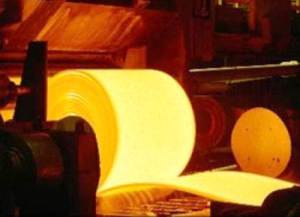
There is a division of heat-resistant alloys on austenitated ferrite (martensitic) and ferritic.
Machine brands of martensitic alloys are produced:
- 4x9c2 and 3x13n7c2 (such a steel grade is used mainly in automotor valves, where the temperature rises to 850-950 ° C);
- X6cm, x5m, 1x8vf, 1x12H2VMF, X5VF (such an alloy is suitable for the production of parts and nodes, which should work 1000-10000 hours within the boundaries of 500 - 600 ° C);
- X5 (such a brand is used to produce pipes that will operate at a temperature limited 650 ° C);
- 1x8VF (such a type of alloys is used in the manufacture of parts of steam turbines that can operate 10,000 hours without losses at a temperature that will not exceed 500 ° C).
 When adding chromium to pearlit alloys, martensitic alloys brands are obtained. Perlit materials include heat-resistant alloys with marking: X7cm, x10s2m, x9c2, x6c. The hardening is performed at 950-1100 ° C, and then at 8100 ° C, it makes a vacation of steel, which allows you to create solid designs with the sorbitol structure.
When adding chromium to pearlit alloys, martensitic alloys brands are obtained. Perlit materials include heat-resistant alloys with marking: X7cm, x10s2m, x9c2, x6c. The hardening is performed at 950-1100 ° C, and then at 8100 ° C, it makes a vacation of steel, which allows you to create solid designs with the sorbitol structure.
Ferritic alloys have a fine-grained structure that they get after heat treatment and firing. In such compositions, as a rule, there is a chrome in the percentage ratio of from twenty-five to thirty-three. Such heat-resistant steel apply the production of heat exchangers and pyrolysis equipment.
Ferritic alloys include such labeling materials: 1x12 s, x28, x17, x18su, 0x17t, x25t. But they cannot be heated more than one hundred and eighty degrees otherwise the material will become fragile due to its coarse-grained structure.
Martensit and ferrite materials are excellent for the production of machine-building parts, the work of which will be produced at a temperature of six hundred degrees, and for a long time.
The most sought-after heat-resistant alloys
 Austenitic heat-resistant alloys became the most demanded materials at the moment in this segment of the stalenation. Their structure is created with the help of nickel, and heat resistant qualities are provided by the presence of chromium. Such austenitic brands are well opposed to the appearance of scale at temperatures not exceeding thousands of degrees.
Austenitic heat-resistant alloys became the most demanded materials at the moment in this segment of the stalenation. Their structure is created with the help of nickel, and heat resistant qualities are provided by the presence of chromium. Such austenitic brands are well opposed to the appearance of scale at temperatures not exceeding thousands of degrees.
In the manufacture of this alloy uses two types of seal: intermetallic or carbide. It is these seals that provide austenitic steel by special properties that are so in demand in various modern industries.
The most popular and relevant alloys are divided into two groups:
- dispersion-hardening (brands H12N20T3R, 0x14n28V3T3UUR, 4x14N14V2M, 4x12N8G8MFB - such steel is the most suitable material for the manufacture of parts of turbines and engine valves);
- homogenic (brands x25n20c2, 1x14n16b, x23n18, x25n16g7ar, x18n10t, 1x14n18v2b, x18n12t - these brands are used for the production of pipes and reinforcements that will work at large loads).
Austenitated ferrite steel due to its alloy with a stable structure, quite a rather high heat resistance. Such brands, due to their fragility, cannot be used to produce loaded parts, but these alloys are shown fine at temperatures reaching 1150 ° C.
Refractory metals and alloys
If the production requires the details of the Supporting Work Wednesday, which will be thousand or even two thousand degreesWhile the alloy needs to use refractory metals.
The elements that are used and the temperature of their melting is as follows:

These metals are deformed when heating, because the high temperature provokes them to change into a fragile state. Their fibrous structure is formed when heated to the state of recrystallization of refractory metals. Heat resistance increases due to mixtures of special additives. And from oxidation at a temperature of over a thousand degrees, these materials protect additives from titanium, tantalum and molybdenum.
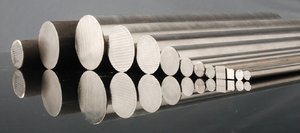 Thus, by alloys of different elements, the necessary qualities of heat-resistant materials can be achieved, which can be used in a wide variety of industries to work in different temperature environments.
Thus, by alloys of different elements, the necessary qualities of heat-resistant materials can be achieved, which can be used in a wide variety of industries to work in different temperature environments.
The various brands of heat-resistant and heat-resistant steels and alloys are recognized as the best material for the manufacture of structures operating in particularly complex and aggressive environments.
1
The scale resistance, otherwise called the heat resistance, is the ability of those or other alloys or metals to resist for a long time at elevated temperatures. And under heat-resistant understand the ability of metal materials will not be destructed and plastic deformation at high temperature modes of operation.
Unloaded structures that are used at temperatures in the area of \u200b\u200b+550 ° C in the gas oxidative atmosphere are usually made from heat-resistant metals. The specified products often include elements of heating furnaces. Alloys based on iron at temperatures above the indicated 550 degrees are prone to active oxidation, as a result of which the ferrum oxide is formed on their surface. This compound is characterized by elementary crystal lattice With a disadvantage of oxygen atoms, which leads to the appearance of a fragile type of scale.
It is possible to increase the heat resistance of steel when it is introduced into it such elements like silicon, chromium, aluminum.
They are capable of creating with oxygen completely different lattices - with a very dense and reliable structure. The level of dumping composition (the amount of required additives) is selected taking into account the temperature at which it is planned to apply the product made from it.
Maximum heat resistance inherent in nickel-based materials (Silhromam). To those, in particular, the following steel grades include:
- 36x18n25С2;
- 15x25t;
- 08x17t;
- 15x6sy.
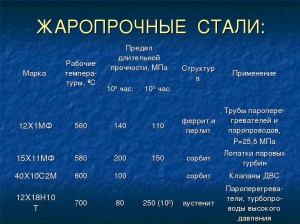
In general, the heat resistance of steels will be the higher, the more chromium there is. Some stamps of steel compositions are capable of working without deteriorating their initial properties even at temperatures around 1150 ° C.
2
The brands of such steels are ideal for the production of products operating under conditions when the phenomenon is present and, naturally, elevated temperatures. The creep is called the leaning of a metal to slow deformation (plastic) at a constant temperature under the influence of constant load.
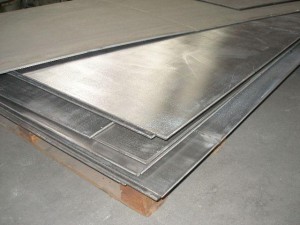
The heat resistance of alloys depends on the type of creep, which can be:
- long;
- short-term.
The latter is established in the course of specially conducted analyzes for tensile products. Surveys are carried out for a short time with a predetermined temperature in the heating furnace.
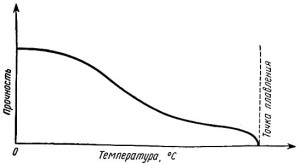
And the long-term creep is determined how you yourself understand, for more exposure to steel. And in this case, the magnitude of the creep limit is the greatest voltage that causes the destruction of the test product at a particular time of exposure and temperature.
3
As of its structure, such alloys are:
- martensitic ferritic;
- pearlit;
- austenitic;
- martensitic.
And the heat-resistant alloys are additionally divided into:
- austenitated ferritic or martensitic;
- ferritian.
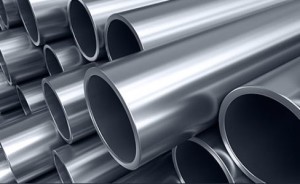
- 3x13n7c2 and 4x9c2 (used at temperatures of 850-950 ° in auto motors);
- X5m, 1x12H2VMF, 1x8VF, x6cm, x5vf (used for the production of nodes and various parts operating within 1000-10000 hours at temperatures from 500 to 600 °);
- X5 (they make pipes for use at temperatures not more than 650 °);
- 1x8VF (used for the manufacture of steam turbine components, function without loss of properties for 10,000 hours or more at temperatures up to 500 °).
Martensitic alloys are obtained from pertrite with increasing chromium in the last quantities. Directly to the pearlity include the following heat-resistant and heat-resistant steel: x13n7c2, x7cm, x9c2, x10s2m, x6cm, x6c (that is, all types of chromolibden and chromocremary compositions). They are hardened at temperatures of 950-1100 degrees, and then (at 8100 degrees) are performed, which allows to obtain solid materials (on the HRC scale - at least 25 units) with the sorbitol structure.
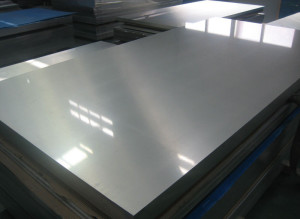
Heat resistant ferritic steel have a fine-grained structure after annealing and heat treatment. In such compositions, there are from 25 to 33 percent of chromium. They are used for pyrolysis equipment and heat exchangers. Ferritious stals include the following stamps: x28, x18su, x17, x25t, 0x17t, 1x12 s. Note that they cannot be heated more than 850 degrees, since in this case the products will become fragile due to its coarse-grained structure.
Martensit and ferrite alloys have proven themselves in the production of machine-building details that are planned to be used at 600 ° for a significant time. Such heat-resistant steel (1x13, 1x12V2MF, 1X12VFR, X6SU, 2X12VMFR, 1x11MF) are alloyed by molybdenum, tungsten, vanadium, and chromium in them, as a rule, is contained from 10 to 14 percent.
4
The greatest demand is used, the structure of which is ensured by the presence of nickel, and the heat resistance - the presence of chromium. In such compositions, there are sometimes minor inclusions of niobium and titanium, carbon in them are very small. Austenitic brands at temperatures up to 1000 ° successfully oppose the process of occasional the appearance of scale and at the same time refer to the group of anti-corrosion steels.
Now the most common enterprises use the described materials attributable to the dispersion-hardware category. They are divided into two types depending on the variant of the completed completion - intermetallic or carbide. It is the procedure of hardening attached austenitic Steel Special properties, so demanded by industry. Famous alloys of this group:
- dispersion-hardening: 0x14n28V3T3UUR, X12NH20T3R, 4x12N8G8MFB, 4x14n14B2m (optimal for the manufacture of vehicle engines and turbine valves);
- homogeneous: 1x14n16b, x25n20c2, x23n18, x18n10t, x25n16g7ar, x18n12t, 1x14n18V2B (these brands are used in the field of output of fittings and pipes working at high loads, elements of exhaust systems, ultra-high pressure units).

Austenitated ferritic alloys have very high heat resistance, which is much more than ordinary highly chromatic materials. This is achieved due to the unique stability of their structure. Such brands began to be used for the production of loaded components due to their increased fragility. But they are perfectly suitable for the manufacture of products operating at temperatures close to 1150 ° C:
- pyrometric tubes (brand - x23n13);
- furnace conveyors, pipes, cementation tanks (x20n14c2 and 0x20n14c2).
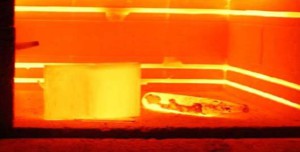
5
In cases where it is required to make parts that can be used at temperatures from 1000 to 2000 degrees, steel based on refractory metals. These include elements characterized by the following melting temperatures (in degrees):
- 3410 - tungsten;
- about 3000 - tantalum;
- 2415 - Niobium;
- 1900 - Vanadium;
- 1855 - zirconium;
- 3180 - rhenium;
- about 2600 - molybdenum;
- nearly 2000 - Hafnya.
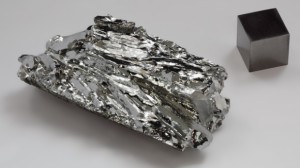
These metals are deformed (plastically) when heated, which is due to the high temperature of their change in a fragile state. When heated to recrystallization values, the fibrous structure of refractory metals is formed and slope. The heat resistance indicator of such materials usually increases the introduction of special additives. And their protection at temperatures more than 1000 degrees from oxidation is usually made by doping using molybdenum, tantalum, titanium and other elements.
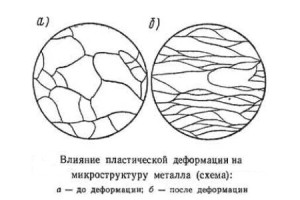
Frequently used refractory alloys with such compositions:
- 30% rhenium + tungsten;
- 40% niobium + 60% vanadium;
- 48% of iron + 1% zirconium + 5% molybdenum + 15% niobium;
- 10% tungsten + tantalum.
6
These alloys, the heat resistance and heat resistance of which are very high, have more than 55% of nickel and more than 65% nickel + iron in its composition. The basic element in both types of compositions is chrome (it is contained from 14 to 23%).
Higher rates of durability and strength at elevated temperatures are based on nickel-based: HN60V, HN75MBTU, HN60U, HN78T (heat-resistant) and HN77ThU, XN70MVTYUB, HN70MHMU, HN70, HN67VMTU (heat-resistant). It is determined by this fact the process of formation on their surface at high temperatures of oxide aluminum and chrome film, as well as (in solid solutions) - aluminum and nickel compounds, titanium and nickel.

In nickel alloys due to a non-essential content of carbon, carbides never appear. And their hardening is the consequence of hardening characterized by dispersed nature, after thermal processing. Under such treatment understand:
- the creation of a solid homogeneous composition of nickel and alloying additives;
- the next aging of the metal (the temperature of the process is about 750 degrees, sometimes 800).
In the process of decaying the solid propulsion, metal reinforcing components are formed, which significantly increase the heat-resistant rates of steel and its resistance to deformities.
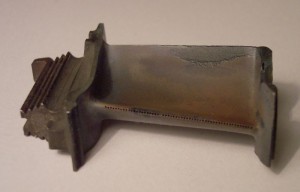
Appointment and brand steels with nickel, with nickel and iron:
- components of gas structures - HN35VMT;
- elements of turbines - xn35VTR;
- discs and blades of compressors - xn35);
- rotors Turbin - XN35W, XN35VMT.
Heating steel is designed for long-term operation under the influence of high temperatures or constant electrical voltage. The material is manufactured in this way to, despite the constant negative impact, not subject to deformation and maintain its initial properties. This species Steel is characterized by two main indicators - long-term strength and creep. D.
Long strength implies the body's ability to withstand negative external influence over a long period of time. The creep of heat resistant steel means the effect of continuous deformation of the material when working in adverse conditions. This is a very important indicator, on which the possibility of using one or another brand on a certain production depends. The creep is indicated as a maximum permissible percentage of deformation for the designated service life. It ranges from 5% 100 hours to 1% per 100,000 hours.
Heat resistant stamps
According to GOST 5632-72, heat-resistant steel should not contain lead impurities, antimony, bismuth, tin and arsenic. This is due to the fact that some of these metals has a small melting point, and their presence in the structure of the material may adversely affect its heat-resistant properties. And other elements from the list of heating are distinguished by negative substances, dangerous for life and human health, so their presence in alloy is extremely undesirable.
Heat resistant steel and alloys are made on the basis of iron with the addition of other metals. The ability to resist high temperatures is achieved by adding chromium and nickel. The content of other metals in alloy is slightly. Heat resistant steel brands vary percentage ratio various components in the structure of the material. Steel P-193 contains up to 1% carbon, not more than 0.6% of manganese and silicon, 30% of nickel and chromium, about 2% of titanium.
The Tinidour brand consists of 0.13% carbon, 1% manganese and silicon, 31% nickel, 16% chromium, 0.2% aluminum. Steel A286 has a structure: 0.05% carbon, 1.35% manganese, 0.55% silicon, 25% nickel, 15% chromium, 1.25% molybdenum, 2% titanium, 0.2% aluminum. The DVL42 material contains 0.1% of carbon, up to 1% manganese, 0.8% silicon, 33% nickel, 23% cobalt, 16% chromium, 5% molybdenum, 1.7% titanium.
Similar composition and DVL52 brand, only instead of titanium it contains 4.5% tantalum. The chromadour substance consists of 0.11% carbon, 18% manganese, 0.62% silicon, 12.5% \u200b\u200bchromium, 0.75% molybdenum, 0.65% vanadium and 0.2% nitrogen. The remaining part in all brands accounted for iron. All listed brands of heat resistant stainless steel are produced by the same technology. Only components and their share in the total mass of the alloy differ.
Production and processing of heat-resistant steel
Heat-resistant wave needed special conditionswhich are not needed in the production of standard brands. The alloy must be extremely low carbon content in order to provide products to the required level of strength. Therefore, coke is not suitable for furnaces. Gaseous oxygen is used as fuel. This allows you to quickly heat the metal to the high temperature required for melting.
Produce heat-resistant stainless steel mainly from secondary raw materials. At the same time, steel and chrome are put into the oven simultaneously. The combustion oxygen quickly warms the metal to the melting point, while the process of the released carbon occurs during the process, which is just necessary to remove from steel. To protect chromium from oxidation, a small amount of silicon is added. Nickel is added to the filling after the start of the melting process. The remaining impurities are sitting in the very end of the procedure. The melting process occurs at a temperature of about 1800 degrees Celsius.
The treatment of heat-resistant steel is made by special solid cutters made of metal cobalto-tungsten groups. Otherwise, the technology is not much different from the processing of standard grades. The same turning and screwing machines are used, regular lubricating and coolants are used. The safety regulations also not contribute to new items.

The welding of heat-resistant steel is made by an arc or argon-arc method. Before the start of the procedure, both connected parts should be necessary to undergo the process of hardening, which consists in heating the metal to a temperature of 1000-1100 degrees Celsius, and then instant cooling. This manipulation will help to avoid micro and macrobrees during welding. It is very important that weld In terms of its characteristics, it was not inferior to the main material, otherwise it could be a serious problem during operation.
Application of heat resistant steel
It is used heat-resistant steel in cases where the work implies constant thermal loads on the part. First of all, the material is used for the manufacture of various furnaces. It significantly extends the durability of the device and is able to withstand several tens of thousands of production cycles. This approach allows to reduce the cost of production.

Austenitic heat-resistant steel are used in the manufacture of rotors, turbine blades, motor valves. Their feature is not only good resistance to high temperatures, but also increased resistance to vibration and impact. Corrosion-resistant heat-resistant steel is used mainly for the manufacture of objects that are operated on the street or under conditions of high humidity. Its feature is the high chromium content in alloy, which allows to effectively deal with oxidation and other negative impacts of the environment.
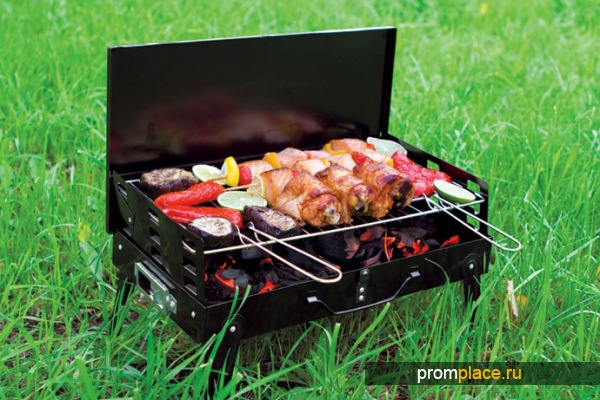
High-alloyed heat-resistant steel is a material for the manufacture of heat exchange pipes, reactors, steam installations. It is designed to work with constantly high temperatures (300-700 degrees Celsius) for a long period. Sheet heat-resistant steel is a basic blank for the production of various devices. From it you can make boilers, use as an inner material for furnaces, cut out the details of a variety of form.
